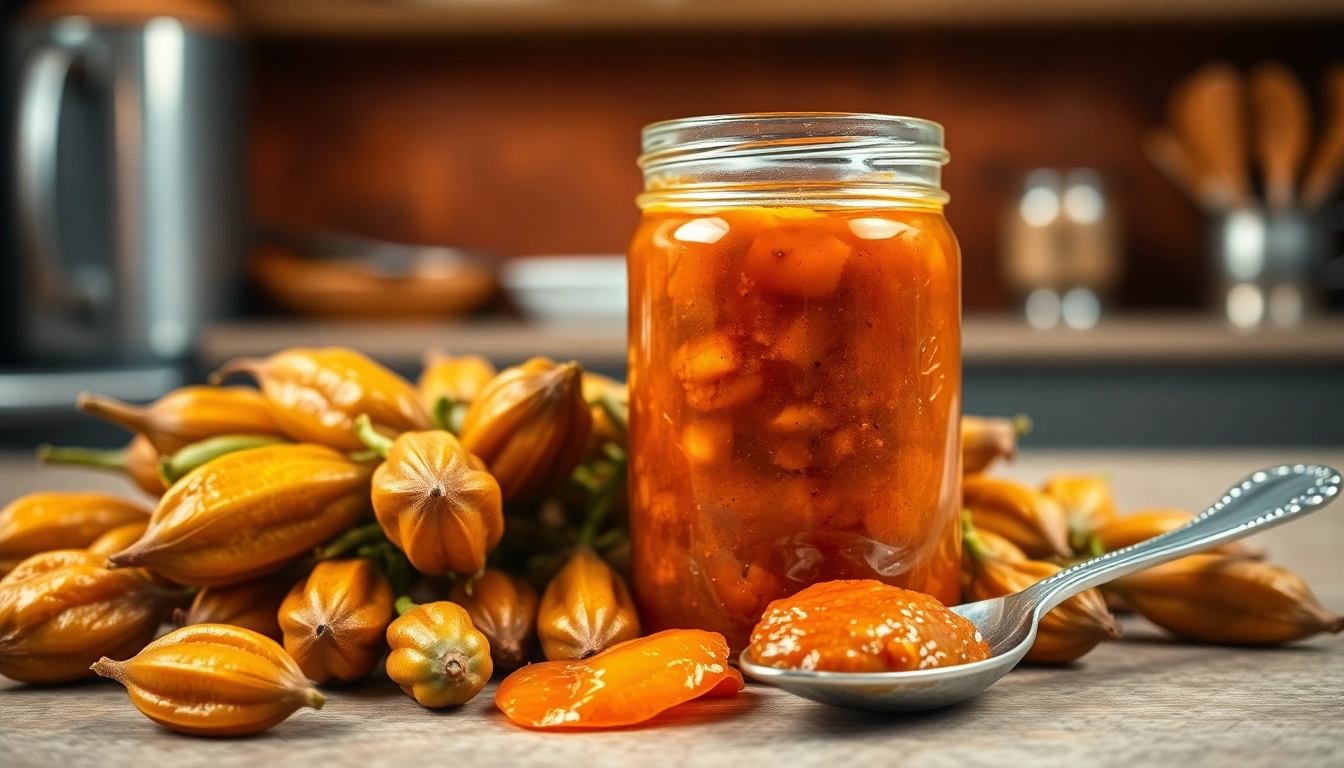Understanding Tamarind Chutney: Origins and Uses
Tamarind chutney, a staple condiment in Indian cuisine, boasts a rich history rooted in regional culinary traditions. Its origin traces back centuries, where it was used to complement a variety of dishes across Indian households and street food stalls. The tangy, sweet, and spicy flavor profile of tamarind chutney makes it a versatile accompaniment, offering a perfect balance to the richness of fried snacks, grilled meats, and even salads.
Traditionally, tamarind chutney is made from the pulp of tamarind pods combined with sugar, spices, and sometimes, pomegranate seeds or dates to enhance sweetness. The result is a thick, luscious sauce that elevates simple Indian snacks such as bhajis, samosas, and chaat. Over time, regional variations have emerged, notably the spicy Rajsthani style, which incorporates a unique blend of spices that give it an extra depth of flavor.
If you’re exploring authentic condiments, you can discover high-quality Tamarind Chutney crafted from premium, natural ingredients. Incorporating this chutney into your culinary repertoire not only brings authentic flavor but also introduces the health benefits associated with tamarind, such as aiding digestion and providing antioxidants.
Common Ingredients and Flavor Profiles of Tamarind Chutney
The key ingredients of tamarind chutney include tamarind pulp, sugar (traditionally jaggery or white sugar), spices like cumin, ginger powder, red chili powder, and black salt. Some recipes feature additional components like mint, pomegranate seeds, or tamarind water to deepen flavor complexity. The dominant taste is a harmonious blend of sourness from tamarind, sweetness from sugar, and heat from spices, creating a layered sensory experience.
The flavor profile is dynamic; it can be adjusted from mildly tangy and sweet to boldly spicy, depending on personal preferences or regional culinary styles. This adaptability makes tamarind chutney a preferred condiment across diverse dishes, from street snacks to refined cuisine.
Versatile Applications in Daily Cooking and Special Dishes
Tamarind chutney’s versatility lends itself to numerous culinary applications. It can be used as a dipping sauce for fried snacks, a marinade for meats, or a tangy component in salads. Its thick consistency also makes it suitable as a base for more complex relishes or in layered sandwiches to add depth of flavor.
For gourmet presentations, tamarind chutney can be drizzled over grilled vegetables, or incorporated into fusion recipes such as tamarind-glazed chicken or seafood. Its sweet and sour notes can balance out spicy curries or complement creamy dishes like paneer or yogurt-based salads.
How to Choose High-Quality Tamarind Chutney
Key Qualities to Look for in Authentic Tamarind Chutney Brands
When selecting tamarind chutney, prioritize brands that emphasize natural ingredients, minimal preservatives, and authentic recipes. High-quality chutney should have a vibrant, rich color indicating fresh tamarind and spices. Look for transparent labeling that lists ingredients clearly, with no artificial colors or flavor enhancers.
Indicators of Freshness and Proper Storage Practices
Fresh tamarind chutney maintains a balanced aroma—between sweet, sour, and spicy—and a consistent texture without separation or spoilage signs. Proper storage involves keeping the chutney in airtight containers away from direct sunlight and heat. When stored correctly in a cool, dry place or refrigerated after opening, it can last for several months without losing flavor or quality.
Tips for Selecting the Best Tamarind Chutney for Your Recipes
Choose chutneys with a good balance of sweetness and tanginess, aligning with your taste preferences. For authenticity, opt for brands that source fresh tamarind and employ traditional preparation methods. If you prefer organic or preservative-free options, inspect labels carefully. Additionally, consider the consistency—whether you prefer a thicker, syrup-like chutney or a more liquid one based on your usage needs.
Step-by-Step Guide to Making Tamarind Chutney at Home
Essential Ingredients and Preparation Tools Needed
- Fresh or dried tamarind pulp
- Sugar or jaggery
- Spices: cumin powder, red chili powder, black salt
- Ginger powder (optional)
- Pomegranate seeds or dates (optional)
- Cooking utensils: saucepan, stirring spoon, strainer
Detailed Cooking Process and Seasoning Tips
To prepare tamarind chutney, soak tamarind pulp in warm water for 15-20 minutes until soft. Strain the mixture to extract smooth tamarind water, discarding any seeds or fibrous bits. In a saucepan, combine tamarind water with sugar or jaggery, heating gently to dissolve completely. Add spices—cumin, red chili, black salt, and ginger powder—to taste.
Simmer the mixture on low heat, stirring constantly to prevent burning and achieve a thick, glossy consistency. Adjust the seasoning as needed, balancing sweetness with tartness. For added depth, incorporate pomegranate seeds during the simmering stage.
Storage Instructions and Shelf Life for Homemade Tamarind Chutney
Once cooled, transfer your tamarind chutney into sterilized glass jars or airtight containers. Store in the refrigerator to prolong shelf life, which typically extends from 2 to 3 months. For longer preservation, consider freezing in small portions. Always use clean utensils to prevent contamination and maintain freshness.
Creative Culinary Uses of Tamarind Chutney
Pairing Tamarind Chutney with Snacks, Starters, and Mains
Tamarind chutney enhances a vast range of dishes. Its tangy sweetness pairs beautifully with fried snacks like samosas, vada, or pakoras. It complements chaat dishes, adding a burst of flavor with each bite. For mains, use it as a glaze for grilled chicken, lamb, or seafood to introduce a subtle sour kick that enriches the overall taste.
Innovative Recipes Incorporating Tamarind Chutney
Elevate your culinary repertoire with inventive recipes such as tamarind-glazed grilled vegetables, fusion wraps with tamarind and mango salsa, or tamarind-infused sauces for stir-fries. Incorporating tamarind chutney into dressings or yogurt-based dips can also create unique flavor profiles.
Presentation Ideas to Impress Guests and Enhance Dishes
For a visually appealing presentation, serve tamarind chutney in small bowls garnished with fresh herbs, pomegranate seeds, or sliced chilies. Drizzle over platters of mixed appetizers or use as a colorful border for plated dishes. Creative plating amplifies the flavor experience and leaves a lasting impression.
Performance Metrics and Customer Satisfaction
Measuring Flavor Impact on Consumer Preferences
To gauge the success of tamarind chutney in your offerings, conduct sensory evaluations, surveying customer taste tests and feedback forms focusing on flavor balance, aroma, and overall acceptability. Monitoring repeat purchases and customer reviews provides insight into satisfaction levels.
Collecting Feedback for Continuous Product Improvement
Encourage feedback through direct surveys, social media engagement, or digital reviews. Use this data to refine recipes, adjust spice levels, and improve packaging. Continuous quality checks and tasting panels ensure that your tamarind chutney remains authentic and appealing.
Strategies for Expanding Tamarind Chutney Market Reach
Leverage digital platforms to showcase recipes, use targeted marketing campaigns emphasizing authenticity and quality, and participate in food expos like Biofach to connect with industry leaders. Providing samples at food festivals and collaborating with chefs or culinary influencers can also broaden market visibility.



